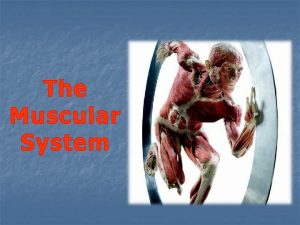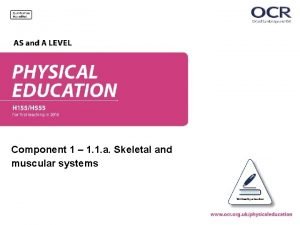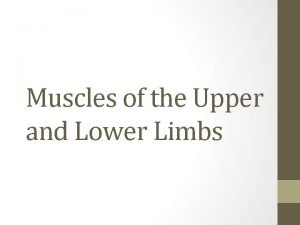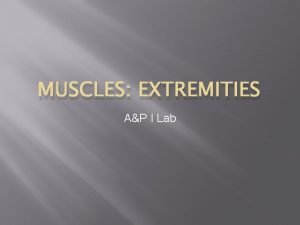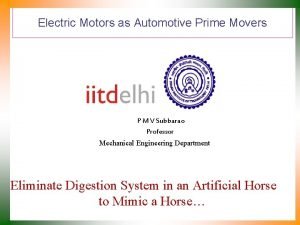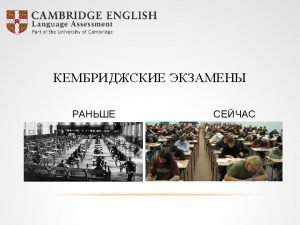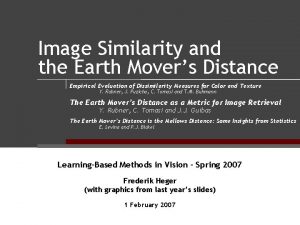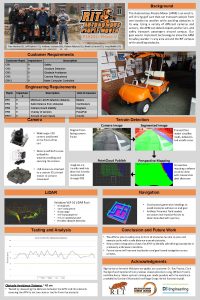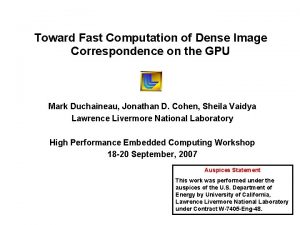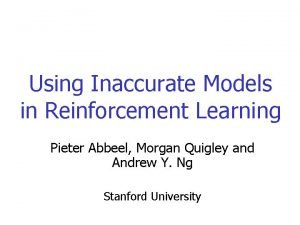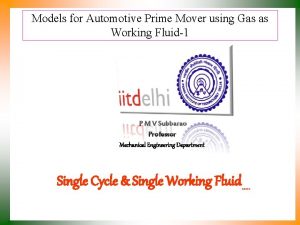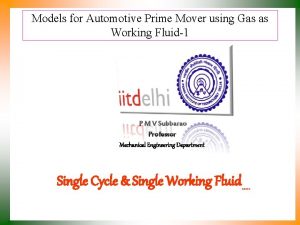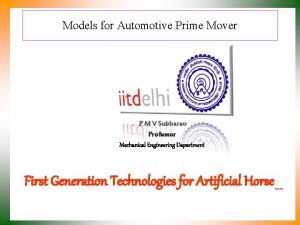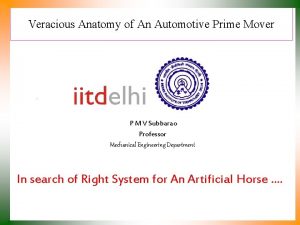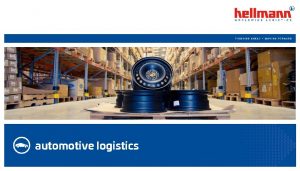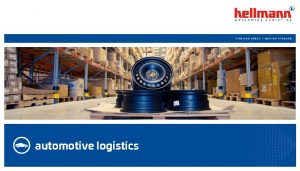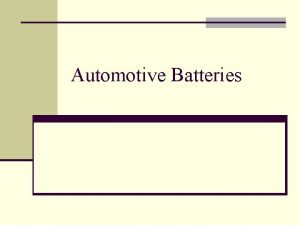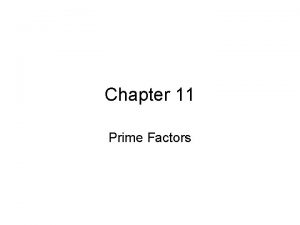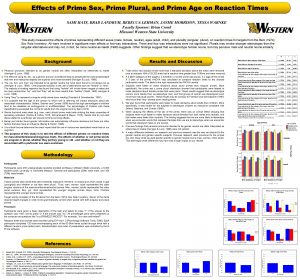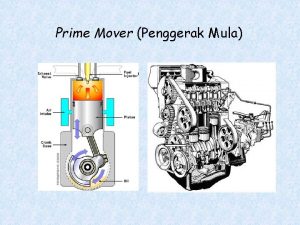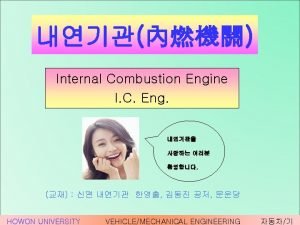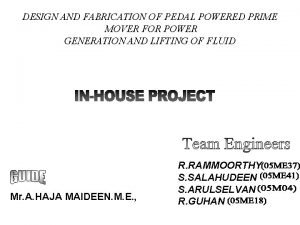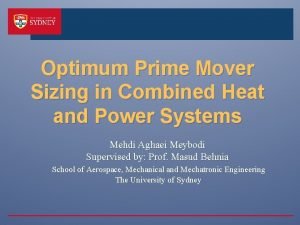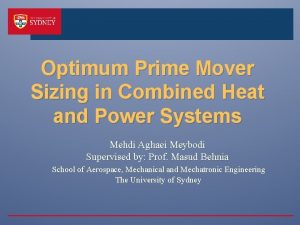Models for Automotive Prime Mover using Gas as




























- Slides: 28

Models for Automotive Prime Mover using Gas as Working Fluid - 2 P M V Subbarao Professor Mechanical Engineering Department Single Cycle & Single Working Fluid…. .

Diesel’s Rational Engine • Theory and Construction of a Rational Heat-engine to Replace the Steam Engine and Combustion Engines Known Today. • This formed the basis for his work on and invention of, the diesel engine. • Eventually he obtained a patent for his design for a compression-ignition engine. In his engine, fuel was injected at the end of compression and the fuel was ignited by the high temperature resulting from compression.

Air-Standard Diesel cycle Process 1 2 Process 2 3 Process 3 4 Process 4 1 Isentropic compression Constant pressure heat addition Isentropic expansion Constant volume heat rejection Compression-ratio: Cut-off ratio:

19 th Century CI engines • 1897 -- Diesel built the first diesel engine at the Augsburg Maschinenfabrik. • 1898 -- Rudolph Diesel, filed a patent application • The single cylinder engine was used to power stationary machinery. • It weighed five tonnes and produced 20 hp at 172 rpm! • The engine operated at 26. 2% efficiency, a very significant improvement on the 20% achieved by the best gasoline engines of the time.

Thermal Efficiency of Diesel Engine Model rc=1 rc=2 rc=3 Typical CI Engines 15 < r < 20 When rc (= v 3/v 2) 1 the Diesel cycle efficiency approaches the efficiency of the Otto cycle

The world’s biggest engine : Wärtsilä-Sulzer RTA 96. : May 2015 14 -cylinder, 2 -stroke turbocharged Diesel engine. Weight : 2. 3 million kgs Speed : 102 rpm powering the Emma Maersk It has now become cheaper to transport goods from China to a US port than to transport the same goods from a US port to the final destination inland of US by a truck.

Early 20 th Century CI engines • High-speed diesel engines were introduced in the 1920 s for commercial vehicle applications and in the 1930 s for passenger cars. • 1922 Benz introduces a 2 -cylinder, 30 hp 800 rpm tractor engine. • 1924 Benz introduces a 4 -cylinder, 50 hp 1000 rpm truck engine. • 1960 - 1970 Peugeot introduced the 404 Diesel followed by the 504 Diesel and the 204 Diesel, the first diesel-powered compact car

Dual Nature of Combustion in High Speed Diesel Engines Qin Dual Cycle Air Qin Qout TC BC Compression Process Const volume heat addition Process Const pressure heat addition Process Expansion Process Thermodynamic Dual Cycle Const volume heat rejection Process

Dual Cycle 2. 5 Process 1 2 Isentropic compression Process 2 2. 5 Constant volume heat addition Process 2. 5 3 Constant pressure heat addition Process 3 4 Isentropic expansion Process 4 1 Constant volume heat rejection Q 3 in Qin 2 4 1 2. 5 4 2 1 3 Qout

Thermal Efficiency of Dual Cycle Note, the Otto cycle (rc=1) and the Diesel cycle (a=1) are special cases:

Utilization of Dual Model for a High Speed Diesel Engine The use of the Dual cycle requires information about either: i) the fractions of constant volume and constant pressure heat addition (common assumption is to equally split the heat addition), or ii) maximum pressure P 3. iii) Transformation of rc and a into more natural variables yields For the same inlet conditions P 1, V 1 and the same compression ratio: For the same inlet conditions P 1, V 1 and the same peak pressure P 3 (actual design limitation in engines):

For the same inlet conditions P 1, V 1 and the same compression ratio and the same peak pressure P 3: P 2/P 1: Pressure, P Pmax Pressure, P “x” →“ 2. 5” Po Po Specific Volume Entropy Temperature, T D tto O al Du el ies Tmax el Dies al Du to Ot Entropy

Rudolf Christian Karl Diesel • Diesel was born in Paris, France in 1858 the second of three children of Elise and Theodor Diesel. • At age 14, Rudolf wrote a letter to his parents stating that he wanted to become an engineer. • In 1893, He began designing an engine based on the Carnot cycle, and in 1893, Diesel published a treatise entitled Theorie und Konstruktion eines rationellen Wärmemotors zum Ersatz der Dampfmaschine und der heute bekannten Verbrennungsmotoren.

Diesel’s Rational Engine • Theory and Construction of a Rational Heat-engine to Replace the Steam Engine and Combustion Engines Known Today. • This formed the basis for his work on and invention of, the diesel engine. • Eventually he obtained a patent for his design for a compression-ignition engine. In his engine, fuel was injected at the end of compression and the fuel was ignited by the high temperature resulting from compression.

Early Diesel’s Engine Cycle and the Thermodynamic Model Fuel injected at TC A I R Combustion Products Air Actual Cycle Intake Stroke Compression Stroke Power Stroke Qin Diesel Cycle Exhaust Stroke Qout Air BC Compression Process Const pressure heat addition Process Expansion Process Const volume heat rejection Process

Thermal Efficiency of Diesel Engine Model rc=1 rc=2 rc=3 Typical CI Engines 15 < r < 20 When rc (= v 3/v 2) 1 the Diesel cycle efficiency approaches the efficiency of the Otto cycle

Structure of Efficient Diesel Cycle 1. 4 1. 3 Higher efficiency is obtained by adding less heat per cycle, Qin, 1. 2 run engine at higher speed to get the same power. 1. 1 1. 5 2 2. 5 3 3. 5

Multi Cylinder diesel engines • 1897 -- Diesel built the first diesel engine at the Augsburg Maschinenfabrik. • 1898 -- Rudolph Diesel, filed a patent application • The single cylinder engine was used to power stationary machinery. • It weighed five tonnes and produced 20 hp at 172 rpm! • The engine operated at 26. 2% efficiency, a very significant improvement on the 20% achieved by the best gasoline engines of the time. • 1922 Benz introduces a 2 -cylinder, 30 hp 800 rpm tractor engine. • 1924 Benz introduces a 4 -cylinder, 50 hp 1000 rpm truck engine. • 1960 - 1970 Peugeot introduced the 404 Diesel followed by the 504 Diesel and the 204 Diesel, the first diesel-powered compact car

Care for Occurrence of Heat Addition • Occurrence of Heat Addition in SI Engine : A Child Care Event. • Occurrence of Heat Addition in CI Engine: A Teen Care Event. CI Engine SI Engine

The Complex Nature of Young Teen & Solutions

Schematic of a diesel spray & flame with temperatures and chemistry

Onset of The Inevitable Danger

Development of Injection Pressure & Injection System in CI Engines

Common Rail Diesel Injection System The Common Rail Diesel Injection System delivers a more controlled quantity of atomised fuel, which leads to better fuel economy; a reduction in exhaust emissions; and a significant decrease in engine noise during operation.

CI Religion in I. C. Engines Diesel Engines High CR No throttling , quality governed, High fuel economy at part load Low specific power Low grade fuel, heterogeneous combustion Turbo-charging – not useful for small engines High NOx and Smoke

Emission standards for diesel heavy duty engines Year Reference CO, (g/k. W-hr) HC, (g/k. Whr) NOx, (g/k. Whr) PM, (g/k. Whr) 1992 - 17. 3 -32. 6 2. 7 -3. 7 - - 1996 - 11. 20 2. 40 14. 4 - 2000 Euro I 4. 5 1. 1 8. 0 0. 36 2005† Euro II 4. 0 1. 1 7. 0 0. 15 2010† Euro III 2. 1 0. 66 5. 0 0. 10 2010‡ Euro IV 1. 5 0. 46 3. 5 0. 02 † earlier introduction in selected regions, Table 1 ‡ only in selected regions, Table 1

Current CI Religion in I. C. Engines Diesel Engines High CR No throttling , quality governed, High fuel economy at part load Low specific power Low grade fuel, heterogeneous combustion Turbo-charging – not useful for small engines High NOx and Smoke

A Model for Secular I. C. Engines The Right Engine High power at full load Homogeneous charge, high CR, high vol. High Fuel economy Distinctly stratified charge, avoidance of throttling losses, quality governing Lower HC. .
 Primary function of muscular system
Primary function of muscular system Pectoralis major agonist
Pectoralis major agonist Weak brachialis
Weak brachialis Prime mover aristotle
Prime mover aristotle Aristotle first mover
Aristotle first mover Rotator cuff muscles
Rotator cuff muscles Aristotle first mover
Aristotle first mover What is prime mover in mechanical engineering
What is prime mover in mechanical engineering Jeff bezos prime video prime
Jeff bezos prime video prime Sage flow meters
Sage flow meters Semi modal verbs
Semi modal verbs экзамен starters
экзамен starters Um mover d'olhos brando e piadoso santillana
Um mover d'olhos brando e piadoso santillana Whats a noncontact force
Whats a noncontact force Earth mover's distance
Earth mover's distance Earth mover's distance
Earth mover's distance Autonomous people mover
Autonomous people mover What is pool table in assembler
What is pool table in assembler Corazon es una palabra esdrújula
Corazon es una palabra esdrújula Digital image mover
Digital image mover Stoller mover
Stoller mover Prime factorization of 108 using exponents
Prime factorization of 108 using exponents Hcf and lcm worksheet
Hcf and lcm worksheet Mamdm
Mamdm Using recursion in models and decision making sheet 3
Using recursion in models and decision making sheet 3 Multiplying decimals using area models
Multiplying decimals using area models Lesson 3 using economic models
Lesson 3 using economic models Algebraic model example
Algebraic model example Using inaccurate models in reinforcement learning
Using inaccurate models in reinforcement learning
